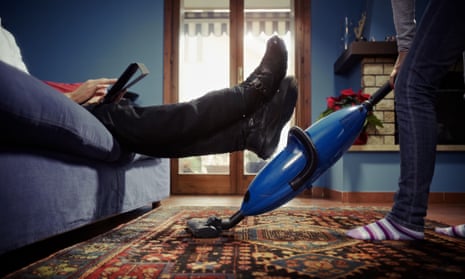In news that will shock no women around the nation, the latest survey shows women do much more unpaid work than men. At least the survey shows that in the past year more men doing more unpaid work than they were last year. The problem is so too are women.
The past year saw many of us in our homes a lot more than normal. And while that has involved many of working from home, it has also involved more unpaid work at home.
When for example young children are at home rather than at school, someone needs to be there supervising them. The latest survey by the Bureau of Statistics on the household impacts of Covid-19 sought to discover who was doing most of this unpaid work.
It is of course, women:
Graph not displaying? Click here
Nearly 45% of all women with children spend more than five hours each week supervising or caring for them – more than a third spend over 20 hours.
By contrast just 32% of men spend more than five hours a week and a mere 17% do more than 20 hours watching over or caring for their children.
This is, of course, no shock. It confirms all household surveys done over the years, but it is worth highlighting because while it might be unsurprising it doesn’t mean it should be a given.
And the reality is that even when we exclude childcare and focus on other unpaid work around the house, women are the ones carrying the bulk of the load:
Graph not displaying? Click here
Over a quarter of women spend more than 10 hours a week doing unpaid indoor housework compared to just 8% of men. When we shift outdoors, 7% of men spend more than 10 hours a week on outdoor housework and repairs, barely above the 6% of women who spend that amount of time doing the same unpaid work.
When we break down who spends more than five hours a week doing various tasks, once again women are the heavy lifters, and men are the leaners.
Over half of women spend more than five hours a week doing indoor housework, compared to just 28% of men, and women continue to be the ones who will most likely be cooking dinners – 54% of women spend more than five hours a week doing so, compared to 30% of men:
Graph not displaying? Click here
A quarter of men spend more than five hours a week caring or supervising children – roughly the same level who spend such time on outdoor housework and repairs. But the reality is the level of work done by men outdoors does not balance the work done by women indoors.
At this point the common response by those who get irked by such facts is that men do more paid employment so it all evens out.
Unfortunately that argument does not stack up.
In 2019 the Melbourne Institute’s Household, Income and Labour Dynamics in Australia survey found that even when taking into account the amount of paid employment, women did more work.
When men were the main breadwinner of a household the amount of work both paid and unpaid was roughly the same by both the men and women, but in all other cases – even when women were the main breadwinner – women did more overall work:
Graph not displaying? Click here
But clearly the Covid-19 pandemic has seen an increase in the amount of work being done, and men have definitely lifted their unpaid workload.
Across all activities more men say they are doing more work now than are year ago compared to the amount of men who say they are doing less:
Graph not displaying? Click here
Ten percent of men say they are doing more indoor housework than last year compared to 5% who say they are doing less.
And yet women are also doing more work than last year.
Nearly 20% of women say they now do more indoor housework compared to last year, while 6% say they do less:
Graph not displaying? Click here
Somewhat oddly given the astonishing increase in grocery shopping done in the past year, the only category that more women say they are doing less work is on such shopping.
And while it is good that men have increased their workload, the reality remains that women have increased theirs by more.
In all categories except grocery shopping more women have increased their level of work compared to men:
Graph not displaying? Click here
Before the pandemic women did more unpaid work than men and during the pandemic men increased the amount of unpaid work they did. But so too did women, and so we see women continue to be the ones carrying the load when it comes to work that doesn’t get paid.

